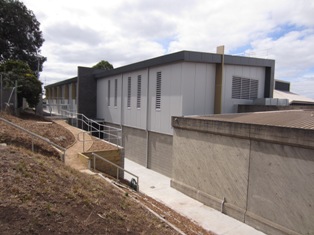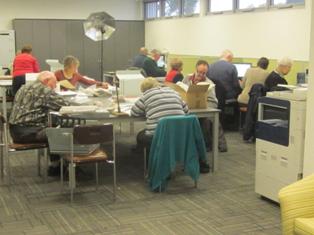The Gold Museum Ballarat (Australia) manages the collections of The Sovereign Hill Museums Association (SHMA) and serves as the regional museum for the Ballarat and central goldfields area. The Association holds some 100,000 items located at both the Sovereign Hill Outdoor Museum and in the Gold Museum.
Collections in the Outdoor Museum are focused on the gold mining and social history of Ballarat, with key collections in mining technology and the working and domestic lives of the people of Ballarat. The collections housed in the Gold Museum cover areas well beyond mining history, including a diverse range of historical collections including objects, archival records and photographs.
 In 2011, Sovereign Hill Museums Association was awarded a grant of $3 million from the Victorian Government to renovate the Gold Museum site. After years of planning and 12 months of construction works, the new Collection Centre was completed in early 2013. The aim of the project was to construct new state of the art storage facilities, develop new working areas for staff, volunteers and public researchers, and to improve overall access to the collection through a new collection management system, Vernon CMS.
In 2011, Sovereign Hill Museums Association was awarded a grant of $3 million from the Victorian Government to renovate the Gold Museum site. After years of planning and 12 months of construction works, the new Collection Centre was completed in early 2013. The aim of the project was to construct new state of the art storage facilities, develop new working areas for staff, volunteers and public researchers, and to improve overall access to the collection through a new collection management system, Vernon CMS.
Sovereign Hill Museums Association is responsible for the collections of both Sovereign Hill Outdoor Museum and the Gold Museum Ballarat. Over 60,000 collection catalogue records were transferred from an older system to the new Vernon system. With the support of Vernon Systems and Thylacine Collection Services, the data transfer process occurred over 2 months. Vernon CMS was adopted as an upgrade from a simpler database program that had been in place for 20 years. The upgrade would allow collections staff to conduct more complex collection management activities such as location tracking, developing detailed Person records, and linking images to collection records.

Thylacine and Vernon Systems also helped SHMA to develop and launch a new website for the Gold Museum in July 2013 using eHive to interface between records on the Vernon CMS database and online audiences. The aim was to get all SHMA’s collection data online in a user friendly way to increase public access to the collections. Around 6,000 images were included in this data. A collections consultant took over the implementation process from Thylacine in June 2013. Her role has been to develop procedures that help bridge and transition between past procedures and systems and new forms and procedures that fit with Vernon CMS, as well as to train staff and volunteers to use the database as part of their normal work activities.
The challenge in the next few years will be to enhance existing records, to increase the number of collection images through ongoing imaging and digitisation activities, and to tackle the backlog of paper records not yet entered on Vernon CMS. Enhanced and new data will be continuously added to the online platform via periodic uploads. Feedback from users of the new website has been sought and has so far been very positive. Staff are beginning to field some enquiries from people who have found information about a collection item on the website and wish to know more. Time will tell whether having collections online generates more enquiries or reduces them.